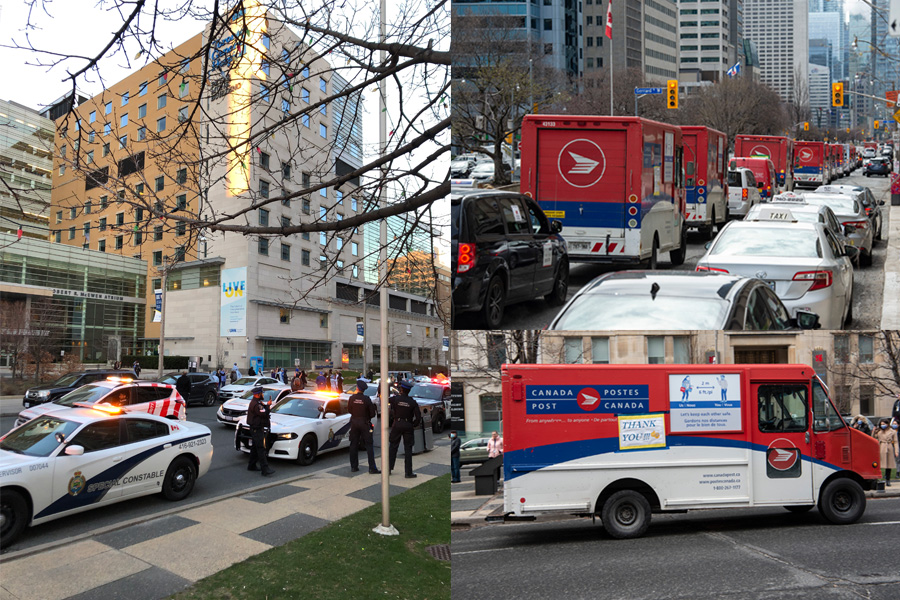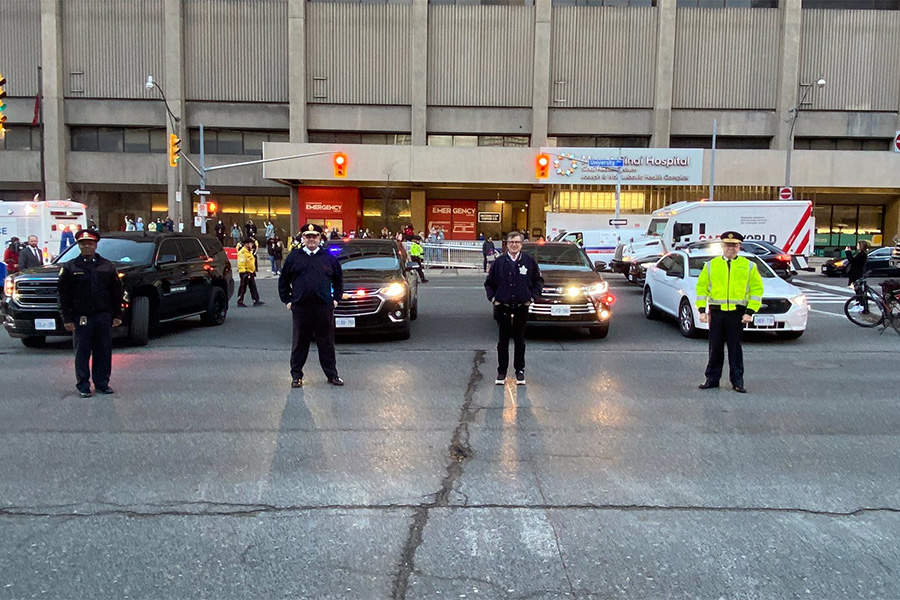When Philip Ma, a respiratory therapist at the Toronto General Hospital, discovered ballet classes being livestreamed on the National Ballet of Canada's social media channels, he hopped to it.
Philip gathered his colleagues to participate in what has become a healthy, comedic respite on breaks.
"It was a fantastic time," Philip told CTV News. "It was a good way to just in your downtime decompress from the things that you're working with in the intensive care unit."
Philip said he also took the class, which led to a few laughs.
"I actually tried a plie and split my pants because scrubs don't stretch very well!" he says.
Son of UHN nurse takes pressure off staff with 'mask relaxers'
When 20-year-old Jack Kay learned that nurses in Italy on the frontline of the battle against COVID-19 were suffering from irritation after wearing face masks for long hours, he immediately did some research to see how he could prevent the same thing happening in Toronto.
It turns out the solution was sitting right in his home, in the form of a 3D printer.
"The 3D printing community developed a template for a mask relaxer, which has been printed and donated around the world," says Jack. "It was no problem for me to spend a few minutes of my day manufacturing these relaxers that would have a positive impact on someone's work life."
Jack is the son of Natalie Kay, a clinical cardiac coordinator nurse at the Peter Munk Cardiac Centre (PMCC). He's finishing his second year of electrical engineering at Queen's University.
Using a template from a 3D printing template website called Thingiverse, Jack has printed and donated more than 180 mask relaxers to the PMCC. He plans to produce 150 more every week until demands are met.
The relaxers work by taking the pressure and irritation produced by the mask straps off the back of the ears and redirecting the pressure to the relaxer, which sits on the back of the head.
"Feedback from staff has been fantastic," says Natalie. "They are very comfortable to wear, and I know staff appreciate any efforts to make work just a little bit easier during these tough times."
Jack encourages others who are looking to make a difference and have access to a 3D printer to consider printing and donating mask relaxers.
"It's important that our frontline workers are looked after and made comfortable to the best of our abilities," says Jack. "We're all in this together."
'Every ventilator counts'
One of the most serious concerns in the COVID-19 crisis has been that hospitals won't have enough ventilators to treat patients who become critically ill. UHN has turned to every resource for help.
The leadership team at the Michener Institute of Education at UHN several weeks ago asked the Respiratory Therapy Department to ship any ventilator equipment they could find to Toronto Western and Toronto General hospitals. Faculty members rallied together and gathered numerous options.
Three pools of equipment were shipped to UHN: pandemic ventilators that were left over from the SARS outbreak in 2003; ventilators that Michener uses for teaching; and, much older, but still functional, ventilators that were outside of Michener's regular pool.
After UHN's medical engineering team assessed the equipment with help from some of the manufacturers, it was ready to go.
"We sent everything we could find that would be useful," says Martha Williams, who was among the Respiratory Therapy faculty and staff collecting the equipment.
Faculty also gathered anesthetic gas machines (a machine that gives a combination of ventilator support and anesthetic vapours), high flow oxygen units, and other equipment that could be used to support patients in an emergency.
"As soon as we got the word 'go,' our Facilities team packed up the equipment on a truck and off they went," says Martha. "It was a huge effort from everyone to get this moving."
In anticipation of a surge of COVID-19 cases in Ontario, this equipment could be the difference between saving a patient's life and frontline workers not having the resources they need.
"There's a worldwide shortage of ventilators, and this is our contribution so that healthcare workers can treat everyone they can," says Lori Peppler-Beechey, Chair of Michener's Respiratory Therapy Department. "At this point in the crisis, every ventilator counts."
Canada Post and Emergency vehicles offer drive-by salute

During these unprecedented times, one thing is certain, we are all in this together.
In the past week, two salutes have driven that point home – quite literally.
Canada Post trucks paraded across Toronto last Wednesday with messages of thanks and gratitude to healthcare providers. They passed by each of UHN's four main hospital sites.
This past weekend, Toronto Police Services, Toronto Fire Services, Toronto Emergency Services and other City of Toronto emergency vehicles followed suit with a salute to our heroic healthcare workers.
"We had a fantastic evening showing support for healthcare workers at hospitals & long-term care homes across our city," Toronto Chief of Police, Mark Saunders, said in a tweet. "On behalf of the Toronto Police, thank you for your courage, sacrifice & commitment to keeping us healthy and safe."
And, Toronto Mayor John Tory also joined in the salute with this photo in his Twitter post.

